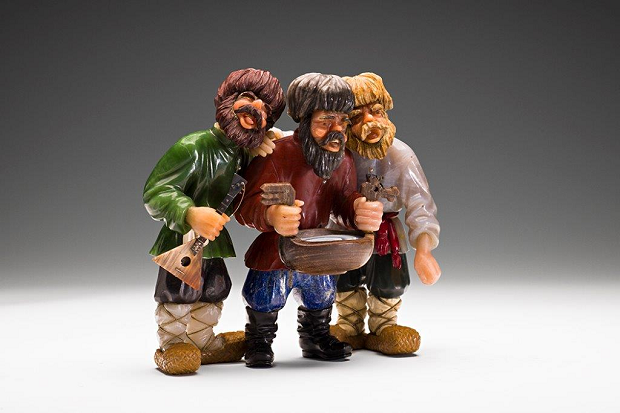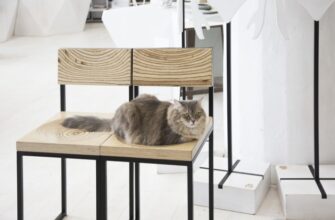Today, on June 01, 2016 the one-pillar chamber of the Patriarch Palace of the Moscow Kremlin was opened an exhibition of works by painter, sculptor, lapidary artist and jeweler Vasily Konovalenko (1929-1989). The exhibition called “the Sculptor Vasily Konovalenko. The power of stone.” It is the first time in our country gives you the opportunity to be fully acquainted with the skill of a man who has revived an old complex technique of working with stone and Carl Faberge Alexei Denisov-Ural’skiy. The exhibition presents about 100 works.
As told by the widow of V. Konovalenko, Anna, “Basil dreamed of a fair life, though he was forced to emigrate, but his heart remained here.”
Briefly about the artist
V. Konovalenko was born in a village near Donetsk. He lived, studied and worked in Leningrad (now St. Petersburg), and in 1981 went to the United States, where almost immediately he was offered a partnership with three American businessman and ensured excellent working conditions. Eight years in America were productive from the point of view of creative freedom, and material well-being of the artist.
We asked Anna Konovalenko about what was an artist in life. “He was a strong, confident person. Never doubted his talent. And at the same time was modest.” In addition to artistic workshops, in a circle of friends, he sang Russian romances to the accompaniment of the wife, had a beautiful voice bass-baritone, and even considered himself a failed singer.
Nation spirit, evident in the artist’s work, found a place in his life. One day, as told to Anna Konovalenko, visiting Pskov village, he spoke with residents and found that they have no water. Concerned about this, some time later, the artist obtained the necessary material… and personally hoisted the well. Master’s hands were deft and at home.
In the guise of the artist, there was nothing from artistic dies – he wasn’t weird or Bohemian, wore strange garments. Than sometimes surprised when they meet those who believe that the image of the artist not of this world.
The artist of stones isolated bead, which is made primarily garments. Of his own works especially appreciated the “Revelers” and “mormyshka”. These works reflect the two sides of the artist – the comic and the dramatic.
Creative way of the stonecutter
During the work of an artist of the Kirov (now Mariinsky) theatre, Konovalenko had to create scenery for the ballet by Sergei Prokofiev “the Stone Flower” with Simon Virsaladze. Then it started working with gems, which, according to the artist, “to study painting”.
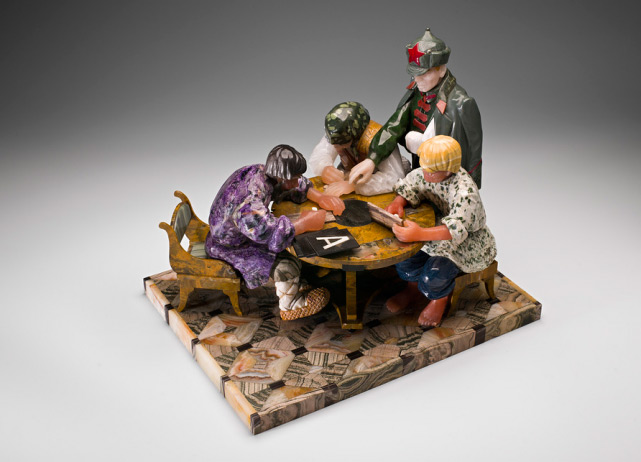
Themes of the works reflect images of Russia in its diversity. Lapotnaya the epic men and women who were subjected to special criticism of Soviet critics and party members, perhaps, are the most frequently occurring character. Colorful Ukrainian Cossacks harmoniously with them, there are also figures of the Gypsy, warrior-hero, the soldier, the organ grinder, the believer and other motifs in our history.
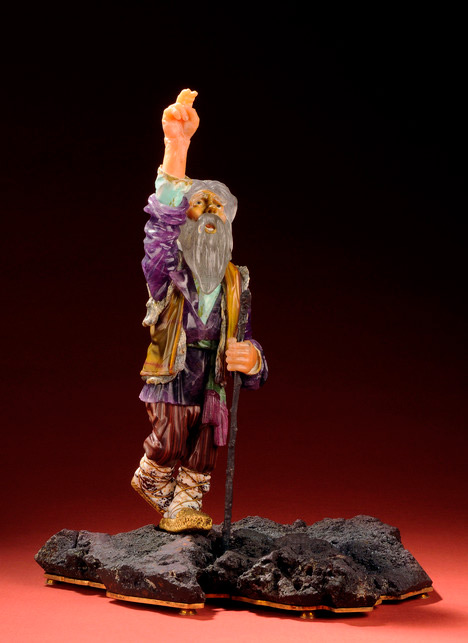
In the Soviet Union Konovalenko experienced and anxiety, and honor. Beside the recognition was ill – will- against the artist was for 9 months, prosecuted for illegal artisanal fishery.
The artist had an exhibition of his works in Russia, although they are not quite consistent with the ideological assumptions of the time, “distorted the image of the Soviet man.” His work is mainly away from the ideology of a registered party scenes did not work out, although a couple things were still.
First, this “educational program” purchased in Gokhran during the Soviet years, which essentially corresponds to the style of the master, but contains the story krasnoarmejca and reflects the Soviet period of history. Secondly, the work is based on “the Gulag Archipelago” by A. Solzhenitsyn, closest to him in spirit. The third job was supposed to be Lenin, but it turned out only a cap of Ilyich and timber.
Curiously, despite the absence of declared and pronounced educational ideas, works on subjects of Russian history, appealing to tradition, are the elements and educational. Dr. Stephen Nash (Museum of nature and science in Denver) told me that nothing similar technique Konovalenko – stone carving in principle – not in America. This is a new for the American public. Another new wave became acquainted with Russian culture, in its traditional version. For example, sojourner-Old is not having analogues in the American consciousness of the Orthodox perspective. C. Nash says that his heart is especially touched by the figure of the mourning mother on the losses of the great Patriotic War. “One day,” he says, ” I saw one of our geologist looked at her and his eyes rolled a tear.”
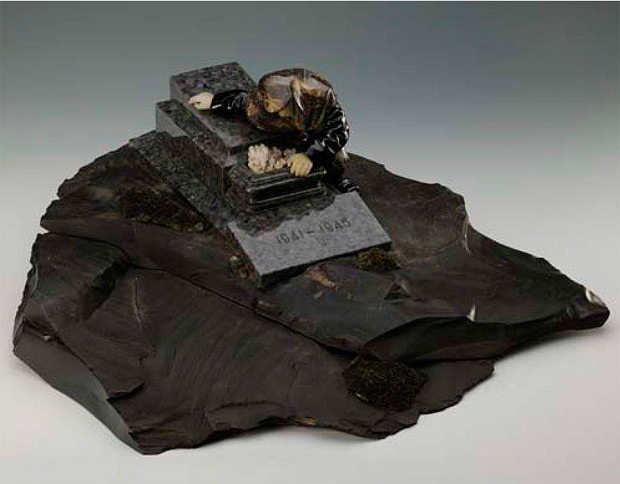
Tatiana Muntian, curator of the exhibition Konovalenko and at the same time the Keeper of the collection of Faberge Kremlin, admires touching work, “grandparents”, where, according to her, the sounds of “the theme of the family, marriage and devotion. Also her sympathy is “a Separation, you, parting, where is evident the dramatic direction in art. She, as a recognized expert, pays attention to every detail, the complexity of the techniques applied in each element, and appreciates the exposure. “In many respects thanks to V. Konovalenko, stone-cutting school today is developing in Russia”, – says T. N. Muntean.
Collection and stone-cutting business as a whole
According to Tatyana Nikolaevny Muntyan, today we have a wonderful stone. Strong the school is in Irkutsk, a workshop “Svyatogor” in Ekaterinburg and the school in Saint-Petersburg, where local authorities over the decades support this kind of art. In Saint-Petersburg exhibitions (World of stone) and competitions. From the mass of brilliant names to give Ivan Golubev, Sergei Falkina, Anton Ananiev – but this is not a complete list. “It’s a thin people says about them T. N. Muntyan, they appreciate Konovalenko – learn from the past without dismissing it, take from it all the best.”
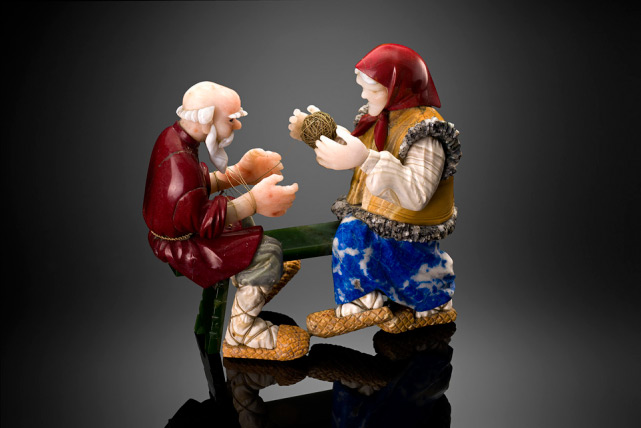
Director of Moscow Kremlin Museums E. Gagarina could not name a single man, her work from the exhibition. But the special position of the Director enjoys a large bright “Behemoth”, rusinowski friendly your mouth. “Why are You doing the exhibition V. Konovalenko?” – we asked. “To show these works – not only the mission, but also fun.”
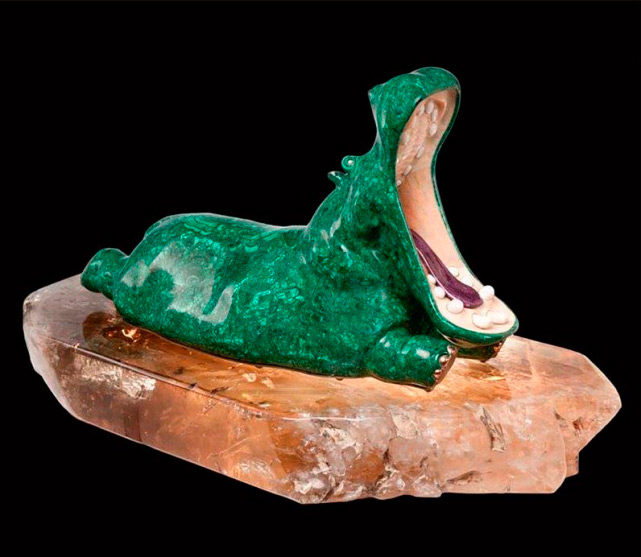
V. Konovalenko no doubt give pleasure and, incidentally, should appeal to children. They are beautiful, sincere and done at the highest level of skill. The pleasure available to us until late summer, after they wander off for collections, which were taken in Gokhran of the Russian Federation, in Denver (in the Museum only 20 of the artist’s work, brought to Moscow 3), in the collection of E. and F. Savinyh, the Fund Kazandzhyan, Museum of Gems in Moscow and a private collection USA.
